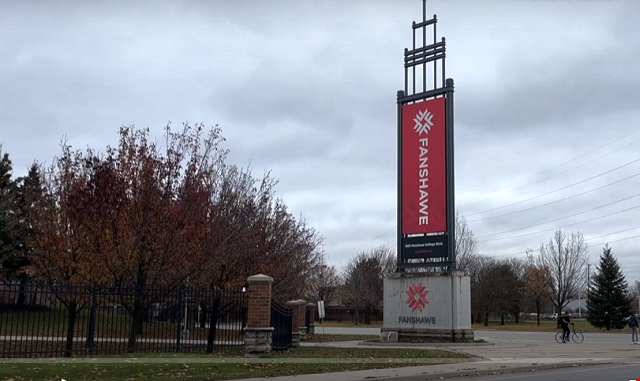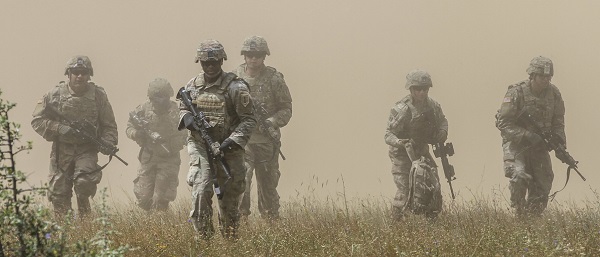COVID-19
College’s COVID vaccine mandate for remote professor was ‘not reasonable,’ arbitrator rules

From LifeSiteNews
Arbitrator Larry Steinberg determined that Fanshawe College erred in mandating that Professor Andrew Wing have the shots as a condition of work despite working from home.
An Ontario arbitrator ruled in favor of a vaccine-free professor who was put on unpaid leave for refusing to comply with his college’s COVID jab policy despite working from home, concluding that the college’s jab mandate was “not reasonable.”
Arbitrator Larry Steinberg, in a ruling released February 20, determined that Fanshawe College, an applied arts college in London, Ontario, erred in mandating that Professor Andrew Wing have the shots as a condition of work despite working from home.
“This case is not about whether the vaccination Policy of the College is reasonable. This case is more narrowly focused only on whether, based on the evidence before me, it was reasonable to apply the Policy to the grievor in the context of his working conditions at the time,” Steinberg wrote in his ruling.
“I find that requiring the grievor to comply with the vaccination Policy was not reasonable and the grievance is allowed. As requested by the parties the issue of the appropriate remedy is remitted to the parties.”
Wing holds a full-time position in the Technical Systems Analysis (TSS) program within the School of Information Technology. All of its classes are remote.
Fanshawe College, like most in Ontario, in November 2021 set mandatory COVID jab policies for staff and students to comply with a provincial government dictate, which was announced a few months earlier. Those that did not comply were fired or placed on unpaid leave.
Wing told the college that he was not going to get the COVID shots and wanted an exemption under Ontario’s Human Rights Code. He was subsequently placed on a three-month leave with no pay that started January 3, 2022.
Wing was not happy with being put on unpaid leave, and with the help of the Ontario Public Service Employees Union Local 110, filed a grievance.
The grievance read, “I grieve that Fanshawe has unreasonably applied its COVID-19 Vaccination policy and as a result has threatened an unreasonable disciplinary action under our Collective Agreement and/or any applicable statues, and in so doing, has violated Articles 4 and 31 of the Collective Agreement along with any other relevant articles and/or laws.”
Wing’s union, as per the arbitrator’s ruling, noted that “There was no credible justification given for the rule requiring that the grievor be fully vaccinated in view of the fact that his work requirements had been and continued to be done remotely.”
Fanshawe College argued that the “policy that everyone who attended on campus had to be fully vaccinated never changed from its inception.”
The college’s human resources department had argued, as per the arbitrator’s ruling, that it was an “administrative burden for the employer to continue to have to check the vaccination status of employees who found it necessary to be on campuses,” and that, “In the grievor’s case this could include meeting with students, attending to technical matters and attending at meetings.”
Steinberg ruled that regarding the human resources department’s claim, “There was no evidence why the grievor could not continue to perform all of these functions remotely as had been since the inception of the program in 2020.”
“I reject this evidence as in any way justifying the requirement that the grievor be vaccinated on the basis of the College’s interest in carrying out its responsibilities,” he wrote.
As for Wing returning to work, in March 2022, he got an email from the college that because he was working remotely he could come back to remote work with pay.
Fanshawe College, like many universities and post-secondary institutions in the Ontario, had in place a COVID jab mandate policy for staff and students that targeted the vaccine-free.
Ontario’s government, under pro-mandate and pro-lockdown Premier Doug Ford, for a time mandated not only mask-wearing, but COVID shots for workers in healthcare and other government settings.
The mandates led to lawsuits against governments and universities and other businesses Canada-wide.
Many institutions along with governments in Canada rescinded vaccine mandates and vaccine passports last year, but not after causing much harm to the unjabbed.
LifeSiteNews has reported on many cases that Canadian arbitrators ruled in favor of the vaccine-free who lost work for not getting the shots.
When it comes to the shots themselves, there is a large body of data showing that COVID jab mandates and passports have been failed strategy for tackling COVID, not to mention the fact that the jabs have been linked to millions of injuries and thousands of deaths.
It is now understood that the COVID virus has a minimal risk of asymptomatic spread, and research indicates that natural immunity from infection of COVID is far superior to vaccine-induced immunity.
COVID-19
Trump DOJ seeks to quash Pfizer whistleblower’s lawsuit over COVID shots

From LifeSiteNews
The Justice Department attorney did not mention the Trump FDA’s recent admission linking the COVID shots to at least 10 child deaths so far.
The Trump Department of Justice (DOJ) is attempting to dismiss a whistleblower case against Pfizer over its COVID-19 shots, even as the Trump Food & Drug Administration (FDA) is beginning to admit their culpability in children’ s deaths.
As previously covered by LifeSiteNews, in 2021 the BMJ published a report on insider information from a former regional director of the medical research company Ventavia, which Pfizer hired in 2020 to conduct research for the company’s mRNA-based COVID-19 shot.
The regional director, Brook Jackson, sent BMJ “dozens of internal company documents, photos, audio recordings, and emails,” which “revealed a host of poor clinical trial research practices occurring at Ventavia that could impact data integrity and patient safety […] We also discovered that, despite receiving a direct complaint about these problems over a year ago, the FDA did not inspect Ventavia’s trial sites.”
According to the report, Ventavia “falsified data, unblinded patients, employed inadequately trained vaccinators, and was slow to follow up on adverse events reported in Pfizer’s pivotal phase III trial.” Overwhelmed by numerous problems with the trial data, Jackson filed an official complaint with the FDA.
Jackson was fired the same day, and Ventavia later claimed that Jackson did not work on the Pfizer COVID-19 shot trial; but Jackson produced documents proving she had been invited to the Pfizer trial team and given access codes to software relating to the trial. Jackson filed a lawsuit against Pfizer for violating the federal False Claims Act and other regulations in January 2021, which was sealed until February 2022. That case has been ongoing ever since.
Last August, U.S. District Judge Michael Truncale dismissed most of Jackson’s claims with prejudice, meaning they could not be refiled. Jackson challenged the decision, but the Trump DOJ has argued in court to uphold it, Just the News reports, with DOJ attorney Nicole Smith arguing that the case concerns preserving the government’s unfettered power to dismiss whistleblower cases.
The rationale echoes a recurring trend in DOJ strategy that Politico described in May as “preserving executive power and preventing courts from second-guessing agency decisions,” even in cases that involve “backing policies favored by Democrats.”
Jackson’s attorney Warner Mendenhall responded that the administration “really sort of made our case for us” in effectively admitting that DOJ is taking the Fair Claims Act’s “good cause” standard for state intervention to mean “mere desire to dismiss,” which infringes on his client’s “First Amendment right to access the courts, to vindicate what she learned.”
Mendenhall added that in a refiled case, Jackson “may be able to bring a very different case along the same lines, but with the additional information” to prove fraud, whereas rejection would send the message that “if fraud involves government complicity, don’t bother reporting it.”
That additional information would presumably include the FDA’s recent admission that at least 10 children the agency has reviewed so far “died after and because of receiving COVID-19 vaccination.”
“The truth is we do not know if we saved lives on balance,” admitted FDA Chief Medical Officer Vinay Prasad in a recent leaked email. “It is horrifying to consider that the U.S. vaccine regulation, including our actions, may have harmed more children than we saved. This requires humility and introspection.”
The COVID shots have been highly controversial ever since the first Trump administration’s Operation Warp Speed initiative prepared and released them in a fraction of the time any previous vaccine had ever been developed and tested. As LifeSiteNews has extensively covered, a large body of evidence has steadily accumulated over the past five years indicating that the COVID jabs failed to prevent transmission and, more importantly, carried severe risks of their own.
Ever since, many have intently watched and hotly debated what President Donald Trump would do about the situation upon his return to office. Though he never backed mandates like former President Joe Biden did, for years Trump refused to disavow the shots to the chagrin of his base, seeing Operation Warp Speed as one of his crowning achievements. At the same time, during his latest run he embraced the “Make America Healthy Again” movement and its suspicion of the medical establishment more broadly.
So far, Trump’s second administration has rolled back several recommendations for the shots but not yet pulled them from the market, despite hiring several vocal critics of the COVID establishment and putting the Department of Health & Human Services under the leadership of America’s most prominent anti-vaccine advocate, Robert F. Kennedy Jr. Most recently, the administration has settled on leaving the current jabs optional but not supporting work to develop successors.
In a July interview, FDA Commissioner Marty Makary asked for patience from those unsatisfied by the administration’s handling of the shots, insisting more time was needed for comprehensive trials to get more definitive data.
COVID-19
Canadian Health Department funds study to determine effects of COVID lockdowns on children

From LifeSiteNews
The commissioned study will assess the impact on kids’ mental well-being of COVID lockdowns and ‘remote’ school classes that banned outdoor play and in-person learning.
Canada’s Department of Health has commissioned research to study the impact of outdoor play on kids’ mental well-being in light of COVID lockdowns and “remote” school classes that, for a time, banned outdoor play and in-person learning throughout most of the nation.
In a notice to consultants titled “Systematic Literature Reviews And Meta Analyses Supporting Two Projects On Children’s Health And Covid-19,” the Department of Health admitted that “Exposure to green space has been consistently associated with protective effects on children’s physical and mental health.”
A final report, which is due in 2026, will provide “Health Canada with a comprehensive assessment of current evidence, identify key knowledge gaps and inform surveillance and policy planning for future pandemics and other public health emergencies.”
Bruce Squires, president of McMaster Children’s Hospital of Hamilton, Ontario, noted in 2022 that “Canada’s children and youth have borne the brunt” of COVID lockdowns.
From about March 2020 to mid-2022, most of Canada was under various COVID-19 mandates and lockdowns, including mask mandates, at the local, provincial, and federal levels. Schools were shut down, parks were closed, and most kids’ sports were cancelled.
Mandatory facemask polices were common in Canada and all over the world for years during the COVID crisis despite over 170 studies showing they were not effective in stopping the spread of COVID and were, in fact, harmful, especially to children.
In October 2021, then-Prime Minister Justin Trudeau announced unprecedented COVID-19 jab mandates for all federal workers and those in the transportation sector, saying the un-jabbed would no longer be able to travel by air, boat, or train, both domestically and internationally.
As reported by LifeSiteNews, a new report released by the Justice Centre for Constitutional Freedoms (JCCF) raised alarm bells over the “harms caused” by COVID-19 lockdowns and injections imposed by various levels of government as well as a rise in unexplained deaths and bloated COVID-19 death statistics.
Indeed, a recent study showed that COVID masking policies left children less able to differentiate people’s emotions behind facial expressions.
COVID vaccine mandates and lockdowns, which came from provincial governments with the support of the federal government, split Canadian society.
-

 Crime1 day ago
Crime1 day agoTerror in Australia: 12 killed after gunmen open fire on Hanukkah celebration
-

 Crime1 day ago
Crime1 day agoHero bystander disarms shooter in Australian terror attack
-

 Business1 day ago
Business1 day agoInflation Reduction Act, Green New Deal Causing America’s Energy Crisis
-

 Business2 days ago
Business2 days agoFuelled by federalism—America’s economically freest states come out on top
-

 Daily Caller2 days ago
Daily Caller2 days ago‘There Will Be Very Serious Retaliation’: Two American Servicemen, Interpreter Killed In Syrian Attack
-

 Automotive2 days ago
Automotive2 days agoPoliticians should be honest about environmental pros and cons of electric vehicles
-

 Media1 day ago
Media1 day agoReporters determined to drive their industry and its reputation into the abyss one Tweet at a time
-

 International3 hours ago
International3 hours agoAt Least 15 Killed In Shooting Targeting Jewish Community At Australia’s Bondi Beach, Police Say



